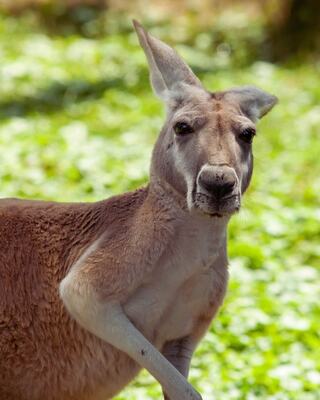
Kangaroo & Wallaby
Kangaroos and wallabies are fascinating members of the macropod family, which means "large feet." They share a unique set of characteristics, but the biggest difference between the two is size. While kangaroos are the largest of the macropods, wallabies are much smaller, with over 40 different species! There are also wallaroos, which fall somewhere in between.
Macropods are marsupials, which means they give birth to tiny, underdeveloped babies after a very short gestation period of about one month. At birth, the baby is only about 1 gram—the size of a lima bean! These tiny newborns use their strong forelimbs to crawl up into their mother's pouch, where they’ll continue developing until they’re ready to leave.
One of the most distinctive traits of macropods is their hopping locomotion. Instead of walking, they move both hind legs simultaneously, making them expert hoppers. Their powerful legs allow them to store elastic strain energy in special tendons, helping them conserve energy as they leap farther and faster.
Macropods have a tough time regulating their body temperature. Unlike many animals, they don’t sweat or pant. Instead, they use clever methods like digging shallow holes in the soil to cool down or licking their forearms for evaporative cooling. It's amazing how well adapted they are to their environments!
At the zoo, we're proud to be part of the Species Survival Plan breeding programs for red kangaroos, western grey kangaroos, and red-necked wallabies. By working with other accredited zoos, we help ensure the survival of these species in human care and beyond.
Meet Our Mob!
We care for a mob of red kangaroos, western grey kangaroos and red-necked wallabies here at the zoo. Our mob loves to munch on a specialized kangaroo and wallaby diet, as well as grapes, bananas, carrots, and yams. For fun, they enjoy peanuts, fresh grape leaves, and fig newtons, along with a variety of hide structures, play pieces, bedding materials, and even punching bags for enrichment!